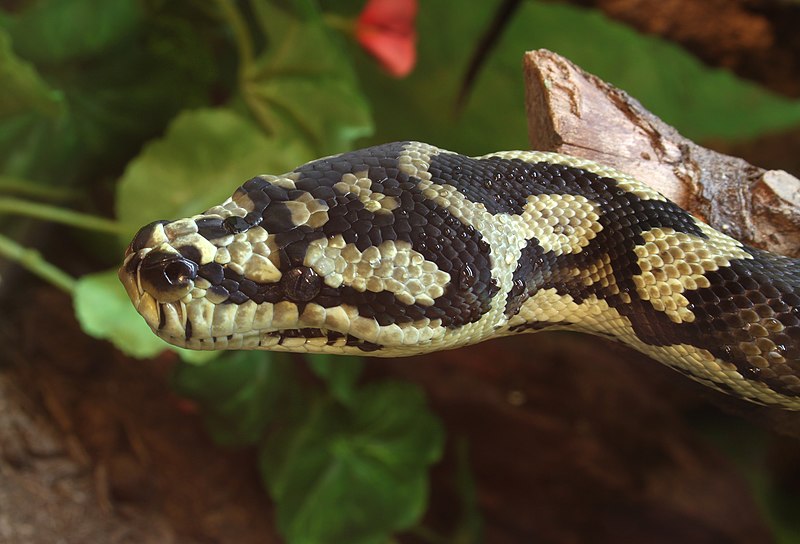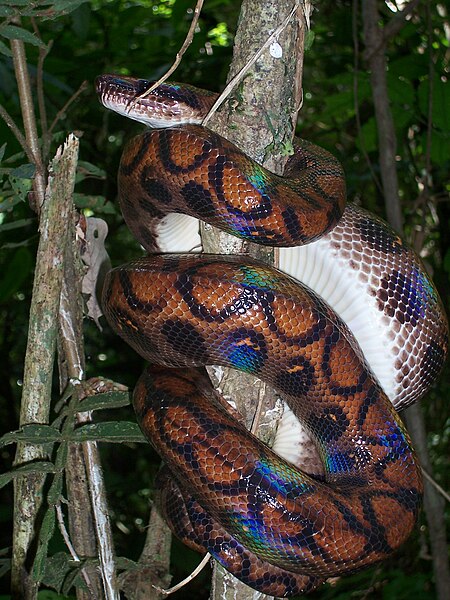 Inclusion Body Disease (IBD), or “Stargazing”, is an incurable ailment that afflicts captive Boa Constrictors, Ball Pythons and related snakes (please see below for species list). As a child with a burgeoning snake collection, I was warned about it by older keepers, and then faced the perplexing condition as I began to work for animal importers and zoos. Always, the scenario remained the same – once symptoms appeared, the snake died. In zoo collections, much time and expense was spent in testing snakes that had been exposed to IBD, with euthanasia being the usual course of action for those found to be positive. However, snake keepers now have cause for guarded optimism – a ground-breaking finding published this week (August, 2012) may pave the way for a treatment. The sequence of events leading up to the discovery involves pet owners, gene-sequencing competitions and a host of twists and turns, and shows that alert, dedicated snake enthusiasts can make vital contributions to conservation and research.
Inclusion Body Disease (IBD), or “Stargazing”, is an incurable ailment that afflicts captive Boa Constrictors, Ball Pythons and related snakes (please see below for species list). As a child with a burgeoning snake collection, I was warned about it by older keepers, and then faced the perplexing condition as I began to work for animal importers and zoos. Always, the scenario remained the same – once symptoms appeared, the snake died. In zoo collections, much time and expense was spent in testing snakes that had been exposed to IBD, with euthanasia being the usual course of action for those found to be positive. However, snake keepers now have cause for guarded optimism – a ground-breaking finding published this week (August, 2012) may pave the way for a treatment. The sequence of events leading up to the discovery involves pet owners, gene-sequencing competitions and a host of twists and turns, and shows that alert, dedicated snake enthusiasts can make vital contributions to conservation and research.
History and Symptoms
Where IBD is concerned, confusion has long reigned supreme. Although described in the 1970’s, we did not know what pathogen (if any) was involved. In addition, many of IBD’s symptoms – appetite losses, regurgitation, shedding difficulties and opportunistic bacterial infections – are common to a host of unrelated ailments. The term “stargazing” was applied to the disease because victims often rear up and seemingly “stare” at the sky. Other unique symptoms include abnormal tongue flicking, loss of coordination, and paralysis. But the existence of these telltale signs of IBD did little to advance our understanding of it.
Species Affected
 Boas are sometimes theorized to be the natural hosts for IBD, and asymptomatic carriers are not uncommon. According to this school of thought, IBD was not originally found in pythons, but was picked up after contact with sick boas. Once infected, pythons seem to expire quickly, and asymptomatic carriers are rare. However, we still have much to learn.
Boas are sometimes theorized to be the natural hosts for IBD, and asymptomatic carriers are not uncommon. According to this school of thought, IBD was not originally found in pythons, but was picked up after contact with sick boas. Once infected, pythons seem to expire quickly, and asymptomatic carriers are rare. However, we still have much to learn.
Since its identification, IBD has been isolated in a variety of species, including Common, Madagascan, Rainbow and Haitian Boas, Ball, Indian, Burmese, Reticulated, Diamond and Carpet Pythons, and Green and Yellow Anacondas.
IBD occurs worldwide but has never been found in wild populations. It is presumed to have spread via the sale and transport of zoo and pet animals.
A Newly-Discovered Virus
An article recently published in mBio, the online journal of the American Society of Microbiology, identifies, for the first time, the pathogen that causes IBD. Known as an arenavirus, this microorganism is related to that which causes Lassa Fever, an often human disease endemic toAfrica. Arenaviruses occur in a variety of mammals, but were previously unknown in snakes. The article’s authors were especially surprised to discover that IBD-infected snakes exhibited 2 distinct strains of arenavirus.
The newly-discovered viruses open up important areas of study. They differ markedly from related species, and resemble the Ebola Virus in appearance and in some manifestations of their infections.
Snakes have never been known to transfer an IBD-like infection to people, even after years of exposure (good news for this lifelong snake-keeper and career herpetologist!).
Solving the IBD Puzzle
As mentioned, this first break in the IBD mystery came about via a uniquely-contorted path that involved 3 specific snakes. Taryn Hook, a pet owner who had lost two snakes to IBD, suspected that a third animal was infected and consulted her veterinarian. The veterinarian had recently learned of a new virus-identification technique developed by researchers at the University of California, San Francisco (UCSF). Ms. Hook contacted Joseph DeRisi, one of the UCSF researchers, and asked his assistance. Dr. DeRisi had not worked on snake viruses, and put the letter aside. Months later, he found it and was inspired to contact Ms. Hook’s veterinarian. Sensing an important challenge, Dr. DeRisi began work on IBD.
Thereafter, a snake in the collection of the Steinhart Aquarium came down with IBD. Others at the institution were found to carry the disease, and were euthanized. The aquarium’s veterinarian learned of Dr. DeRisi’s work, and sent tissue samples to him.
Identifying the IBD pathogen required that the genome of a typical victim be sequenced. Fortunately, scientists at other University of California campuses were involved in a friendly genome sequencing competition (what will those geneticists think of next!). Spurred by the competitive spirit, they soon sequenced the Boa Constrictor genome. This development enabled the UCSF researchers to discover the unusual arenavirus responsible for IBD.
Detailed studies require a reliable supply of the newfound arenavirus. When a Boa Constrictor owned by cooperating veterinarian died of cancer, its kidneys were harvested as a source of cells. Soon, arenaviruses were happily growing in the lab, allowing for further research and, hopefully, more important breakthroughs.
The Future
 Now that the IBD culprit has been identified, treatments and vaccines may be a possibility.
Now that the IBD culprit has been identified, treatments and vaccines may be a possibility.
Additional research may lead to medical advances that will be of benefit to species prone to related pathogens. For example, other arenaviruses have been found in Rosy Boas, Gaboon Vipers, various Ratsnakes, Bearded Dragons, Savanna Monitors, Jackson’s Chameleons and other reptiles.
The Role of Pet Owners
I think an earlier comment on the importance of responsible pet ownership bears repeating. Had Ms. Hook not taken matters in hand and sought help from an unlikely source (Dr. DeRisi had discovered an unrelated parrot virus), IBD would likely still be shrouded in mystery. Keep alert and share what you learn…I for one am always eager to hear about your observations and ideas!
Further Reading
Merck Veterinary Manual description (not updated with above info)
Diamond Python image referenced from wikipedia and originally posted by H. Crisp
Peruvian Rainbow Boa image referenced from wikipedia and originally posted by Damien Farrell
Australian Carpet Python image referenced from wikipedia and originally posted by Amos T Fairchild
 That Reptile Blog – Reptile, Amphibian and Exotic Pet Care and Information
That Reptile Blog – Reptile, Amphibian and Exotic Pet Care and Information



I watched a video on this not too long ago. I’m so glad that breakthroughs have been made on this front. Those poor snakes!